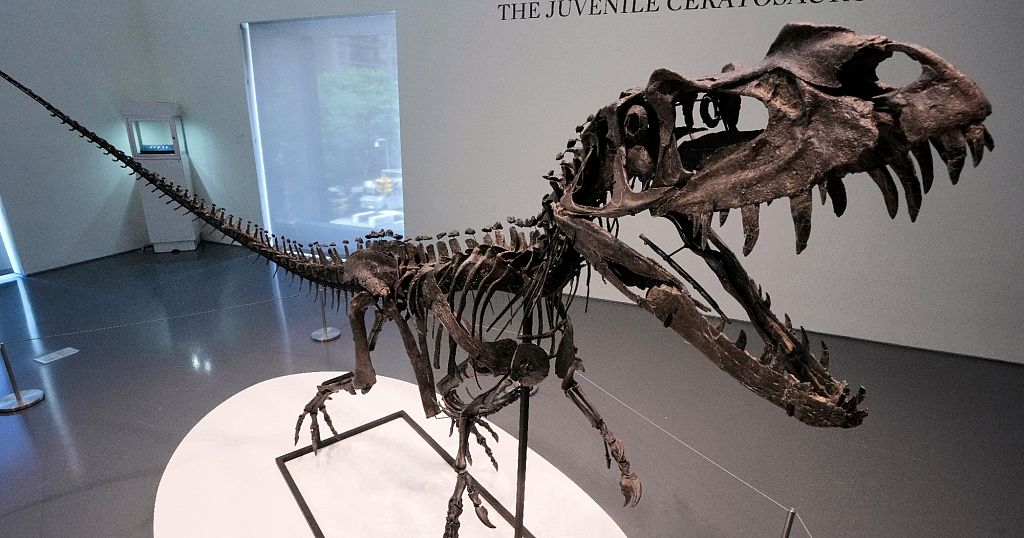A record-breaking juvenile dinosaur skeleton and a rare Martian meteorite headlined Sotheby’s Geek Week auction in New York this week, drawing multimillion-dollar bids that underscored soaring demand for prehistoric and extraterrestrial artifacts. The event, part of the 2025 installment of the auction house’s annual science- and pop culture-themed sales, saw 122 items cross the block, including gemstones, fossils, and geological specimens, but few lots commanded attention like the Ceratosaurus nasicornis remains.
The nearly complete dinosaur skeleton, discovered in Wyoming in 1996, sold for $30.5 million after fees—over five times its initial $4–6 million estimate. Bidding opened at $6 million before climbing in increments of $500,000 and later $1 million, ultimately reaching a hammer price of $26 million. Standing over 2 meters tall and stretching 3 meters long, the specimen comprises 140 fossil bones, with select sculpted elements filling gaps in the structure. Sotheby’s described the creature as a bipedal predator from the late Jurassic period, approximately 150 million years old, resembling a smaller Tyrannosaurus rex with distinctive horn-like nasal features.
Equally notable was the sale of a 4.5-billion-year-old Martian meteorite, which fetched over $5 million. Identified as the largest known Mars-origin rock on Earth, the specimen drew collectors seeking tangible connections to the Red Planet. Additional highlights included iridescent gemstones and rare minerals, though none rivaled the Ceratosaurus in price or spectacle.
The auction’s results reflect a growing appetite for scientifically significant—and headline-grabbing—natural history artifacts. While private ownership of such items remains contentious among paleontologists, who argue fossils belong in public institutions, high-profile sales continue to surge. Sotheby’s emphasized the Ceratosaurus skeleton’s educational value, noting its potential to inspire interest in evolutionary biology. Still, its eventual display—whether in a private collection or museum—remains unclear.
Geek Week, now in its fourth year, has evolved into a marquee event for niche collectors, blending relics of Earth’s ancient past with space-age curiosities. This year’s edition, held amid rising interest in commercial paleontology and asteroid mining ventures, underscores how objects once confined to laboratories and museums are increasingly entering the realm of luxury investment.
